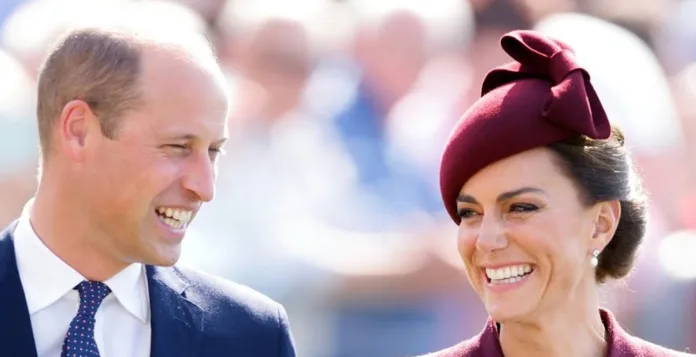Princess Kate playfully refers to Prince William as “Big Willy,” a nickname from their university days that highlights the couple’s enduring sense of humour.
In a delightful revelation about the personal side of the British Royal Family, it has emerged that Princess Kate once gave Prince William a cheeky nickname during their time at university. Known for their affectionate and sometimes humorous nicknames, the Royal Family has seen various members adopting playful names for one another. The late Prince Philip famously referred to Queen Elizabeth II as “Cabbage” and “Lilibet,” the latter of which inspired Prince Harry and Meghan Markle to name their daughter Lilibet.
Similarly, King Charles and Queen Camilla were known to call each other “Fred” and “Gladys,” and Meghan Markle affectionately refers to Prince Harry as “H.” However, it appears that Princess Kate may have taken the crown for the cheekiest nickname of all. During their university days at St Andrews in Scotland, Kate reportedly called Prince William “Big Willy.”
Embed from Getty ImagesThe couple’s romance began in the picturesque setting of St Andrews, where they first met. While Prince William confessed to not recalling the exact moment of their initial meeting, Kate remembered vividly. She recounted to ITV News how she went “bright red” and “scuttled off” upon encountering the young prince, reflecting her initial shyness and nervousness.
Kate Nicholl’s book, “Kate: The Future Queen,” describes Kate as “beautiful” and “radiant,” capturing her charm and confidence during her early university days. The book notes that although she was initially reserved, her natural beauty and poise shone through, endearing her to those around her.
As their relationship blossomed, Kate and William moved from being friends to becoming a couple, with their bond deepening over time. Reflecting on their university days, Kate and William shared how their friendship evolved into a romantic relationship. William described their time living together and growing closer, noting that their friendship laid the foundation for their future together.
Despite the playful nickname, the couple has maintained a warm and supportive relationship, evident from their recent public appearances. As they continue their royal duties, including their support for the Paralympics, their genuine connection and sense of humour remain a central part of their lives.
Analysis:
Political: The revelation of Princess Kate’s playful nickname for Prince William highlights the human side of the royal family, which can often be overshadowed by their formal public personas. In political terms, this underscores the role of personal relatability in public perceptions of royal figures. The ability of public figures to connect with ordinary people through personal anecdotes and humour can influence public support and soften the often stringent image of royalty. The public’s fascination with the royal family’s private lives, including their nicknames and informal interactions, reflects a desire for a more relatable and accessible monarchy.
Social: Socially, the nickname “Big Willy” offers insight into the dynamics of the couple’s relationship and their ability to maintain a sense of normalcy despite their royal status. It highlights the balance between public duties and personal lives that royals must navigate. The lightheartedness of the nickname contrasts with the often serious and formal nature of royal duties, showing that even high-profile individuals can have playful and intimate moments. This adds to the broader social narrative about the importance of maintaining personal connections and humour in the face of public scrutiny.
Racial: The nickname and the personal anecdotes about Kate and William do not directly intersect with racial issues. However, the broader conversation about the royal family’s public and private lives can intersect with discussions about race when considering how different members of the royal family are portrayed in the media. For example, Meghan Markle’s experiences highlight how race can influence perceptions of royalty and their personal lives. In this context, the nickname serves as a reminder that personal experiences and humour are universal, transcending racial and cultural boundaries.
Gender: The playful nickname reflects gender dynamics within the context of royal relationships. It shows that women, like Princess Kate, can express affection and humour in their relationships with their male counterparts, challenging traditional notions of gender roles within the monarchy. The casual nature of the nickname contrasts with the formal expectations often placed on female members of the royal family, demonstrating that personal relationships can defy conventional gender norms. This aligns with broader gender discussions about the role of women in public and private spheres.
Economic: Economically, the light-hearted aspects of the royal family’s personal lives, such as nicknames, are part of the broader public interest in royalty. This interest drives media coverage and public engagement, which in turn influences the economic aspects of royal duties and activities. The royal family’s ability to connect with the public through personal stories and humor can impact their popularity and, by extension, the economic support and funding they receive. The fascination with their personal lives contributes to the broader economic framework surrounding the monarchy and its public engagements.
